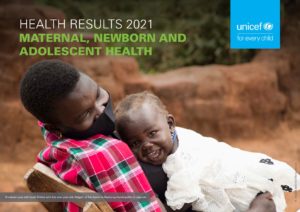
Context
The first month of life is the riskiest time for a child. In 2020, a neonatal death occurred every 13 seconds, cumulating in 2.4 million deaths in that year alone. Stillbirths remain an urgent issue, with almost 2 million babies stillborn each year. Although maternal mortality declined significantly between 2000 and 2017, around 800 women die every day from preventable causes related to pregnancy and childbirth, according to the latest data.
As the COVID-19 pandemic continued to impact all areas of maternal, newborn, and adolescent health, UNICEF supported countries with their public health response, helping provide access to essential supplies and ensure the continuity of essential health services. Around 1 million adolescents died in 2020. Many do not have access to the information, services and protective environments they need to stay healthy and develop healthy lifestyles into adulthood. Mental health conditions are a major burden for adolescents globally,
a factor exacerbated by the COVID-19 pandemic.
Adolescent girls face increased risks with the onset of puberty: every year, an estimated 23 million girls become pregnant. Overall, compared to older women, fewer adolescent girls receive antenatal care, skilled delivery attendance or postnatal care for themselves or their newborns. Cervical cancer due to the Human Papilloma Virus (HPV) infection acquired in adolescence is the fourth most common cancer among women, with 90 per cent of new cases and deaths in 2020 occurring in low- and middle-income countries. UNICEF works with adolescents to address these risks by improving the policies, programmes and services that affect their health and well-being.
UNICEF Work and Results in 2021
Through its Strategic Plan 2018–2021, UNICEF committed to working with countries to:
- Accelerate the scale-up of essential maternal and newborn care services, including antenatal, postnatal, and home-visit support.
- Eliminate maternal and neonatal tetanus, which strikes the most vulnerable.
- Promote and support adolescent health and well-being by developing and implementing country plans, introducing the HPV vaccine, and supporting school-based, integrated health programmes.